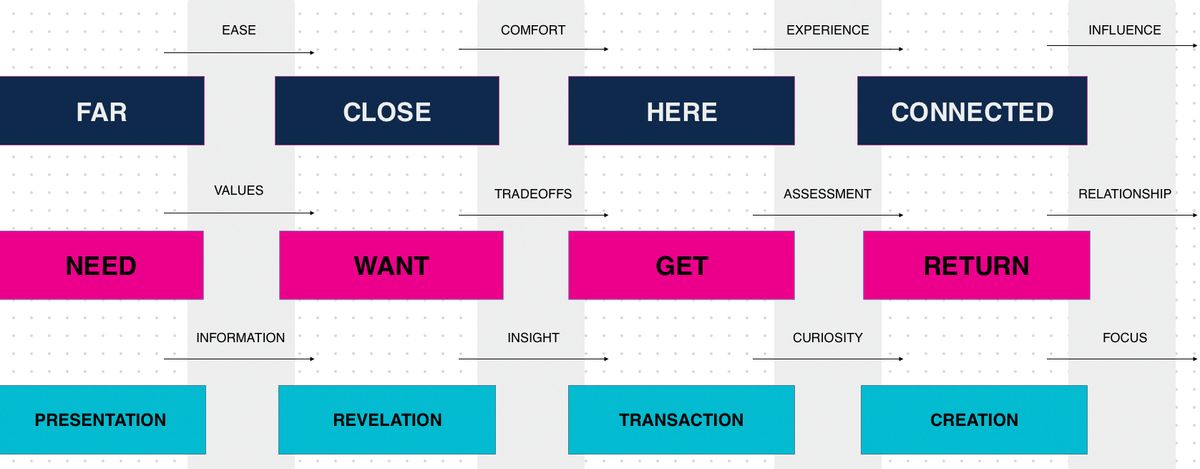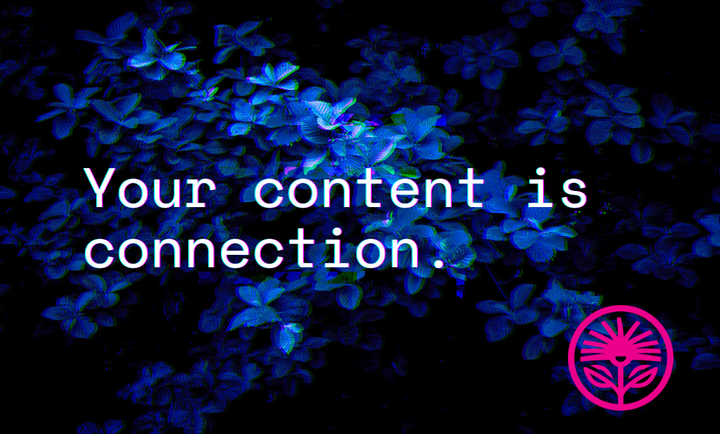Model: How far away are your customers?
One of the most common questions I get is simply: “Where do I go to reach people?”

Something’s been bugging me.
One of the most common questions I get, after a client or friend has a good sense of their value and their best customer, is simply: “Where do I go to reach people?”
It comes in the form of, “What social media platform is best? Should I be on TikTok?” Or “Should I have a blog or a newsletter?” Or “Does advertising work? Should I put ads in a magazine or on a podcast?”
Those are all great and necessary questions. That’s not the problem.
The problem is that the best answer I’ve typically been able to give is, “It depends.” And then I have to ask a series of increasingly specific questions to be able to give any useful advice.
And that’s made marketing seem way more complicated than it is. Just because it’s complex, as in there are countless overlapping and interwoven components to the system, that doesn’t mean our place in it is complicated.
And I think (hope?) I’ve found a way to make it a lot simpler to understand and easier to exert more control over.
Because when people ask what social media platform to be on (“Should I start a Mastodon account?”) or if they should spend money on Google ads or invest more in SEO, they’re not asking about technology—they’re asking about DISTANCE.
Remember: Marketing is simply Demonstrating Value at a Distance.
So let’s talk about distance, and how to bridge the gap between you and your best potential customers.
The way I see it, there are four distances: Far, Close, Here, and Connected.
And when I ask clients my series of invasive questions, what I’m doing is trying to range-find—identifying where they are, where their clients are, and the best way to close the distance.
FAR
Potential clients, for the most part, start far away. They have a need or they’ve experienced a problem that sparks their entry into the “market.” They’re now the type of person who has the type of problem or opportunity you’re suited to help with. This spark occurs before you enter the picture.
Once it’s happened, you’re now in play, but they’re almost certainly too far away to try to sell to just yet.
You know those annoyingly guilt-ridden cold emails you get from desperate sales people? It feels gross because they’re trying to get closer than you’re ready for. You’re still far away, and they’re acting like you’re close.
So at this distance, I advise my clients to focus on PRESENTING their business to their ideal clients, demonstrating that they have the credibility to solve the NEED, and providing INFORMATION that shows they have overlapping values with those ideal clients.
This might be in your social media posts (on the platforms you know your best clients use, when they’re in the headspace to consider a business like yours), your SEO descriptions, in your appearances on others’ podcasts, or in your ads. These are the media, spaces, and opportunities you have access to where you can reach far away prospects, where you know they’ll be.
Because this is all about making it EASY to transition to…
CLOSE
Now that they’re aware of you, and have taken an easy step to get closer (like visiting your website, signing up for your newsletter, subscribing to your YouTube channel, clicking on your ad, or dropping into your store) it’s time to REVEAL.
This is the moment to demonstrate that you understand more than their initial NEED (like needing the type of product you sell) and that you have what they really WANT. You show that you’ve made tradeoffs in your business, service, product, or organization that lean into values you share with your clients and eschews those you don’t.
So, personally, when I need to contract repair services for my house, I’m likely to pick the one that demonstrates that they understand I’m more interested in having a clean, organized, and stress-free house than I am in the minutiae of the manufacturing process or the precise type of screw used. That matters to someone, but not me. I want it done quickly, quietly, and on budget—and I’m willing to pay a shockingly high premium for it.
You might feel the exact opposite way—and that’s why it’s absolutely vital for companies to REVEAL themselves and their principles and tradeoffs early, so that we all get what we want. This might be done in follow-up emails, in newsletter content, website copy, or on social channels where you know potential clients are subscribing to or following you in particular (instead of you showing up randomly in a discovery tab).
Because this phase is all about making it COMFORTABLE for the customer to get what they want when they arrive…
HERE
This is the phase where the customer is ready to make or has just made a TRANSACTION with you to GET what they WANT.
And this is about their assessment of value, not ours. They decide whether they got what they truly wanted—and if it’s only what they needed, it isn’t enough.
The tradeoffs we’ve made based on the values we share must be clear, so that we can overdeliver on our promises.
Getting what you need when you pay for something is the floor. If you don’t get what you paid for, you got scammed.
But you can get everything you paid for and still be disappointed. And most people are, unless they get more than they paid for.
When clients are buying from you, browsing your store, adding items to their cart, or asking follow-up questions about your service contract, your job is to be extraordinarily CURIOUS about how they perceive value.
What do they focus on? What do they truly care about?
It’s likely different from what we imagined, planned for, or even hoped. But it’s almost certainly less than we’re doing now.
Does your purchase confirmation email give the customer additional value, or does it just remind them of what they spent? Does your request for feedback give the opportunity for real, authentic criticism, or is it phrased to only capture what we want to hear?
Or, we might think our job is to produce page upon page of documentation—but is anybody reading it? We might think our job is to entice our customers with flash sales and promotions—but is that just training our most frequent customers to never pay full price?
It can be hard to undo what we’ve done, once we’ve sunk time or money into it.
But it’s that curiosity, openness, and vulnerability that leads our best customer to…
CONNECT
Finally, the customer assesses the RETURN on their investment, whether they got more than what they needed, and if they truly got what they wanted in the experience.
During this phase, your job is to focus on new value you can CREATE based on the feedback you get from your best customers and clients (directly or indirectly).
Do more of what’s working, less of what isn’t, and find ways of integrating the feedback you get into your marketing and business process, so that one directly improves the other.
Your reputation is now, if only slightly, entwined with your customers’. Your actions reflect on their values, and vice versa.
So at this phase, you want to focus on your RELATIONSHIPS of greatest INFLUENCE. That is, determine the overlapping clients in this Venn diagram: The clients you’ve had the greatest influence on (what you did or sold clearly worked), and the clients who have the greatest influence on others (they are referrers).
Note: Your massive, multi-billion-dollar dream client may fit neither criteria. While your smaller, scrappier, and eager client may fit both perfectly.
Because it’s here in the final phase that we sow the seeds of new relationships, entering at the farthest end of the range. Our best clients refer others based on our over-delivery of value enabled by the tradeoffs we’ve made because of our overlapping values.
So, if you’re asking yourself, “Where do I post? Where do I advertise? Where do I show up?”
You can ask yourself, “How far away is my customer?”
If they’re FAR:
Focus on the places you’re best suited to present your business (like SEO, social media, ads, and sponsorships) where you know your best potential clients are, and where you can demonstrate your overlapping values, making it easy to get:
CLOSE:
Focus on revealing (in your newsletter, on your website, in your videos, in your store and signage) that you can provide what they truly want based on the tradeoffs you’ve made, making it comfortable for them to get:
HERE:
Focus on making sure they get what they want in and around the transaction (in the negotiation, in the shopping cart, at the counter, in the kick-off meeting), overdelivering and being extra curious about the value they perceive so they’ll want to:
CONNECT:
Focus on creating new value (by getting quality feedback, refining your service offering, removing unnecessary features, adjusting your focus, changing your ads, improving your newsletter) based on the return your clients see because of your influence, and the referrals they make to those they have influence on.
And that's what restarts the cycle, creating the sparks that bring new people into the market you serve.
Reply to this email to me know where this is still unclear or unhelpful!
Because next week, we’re turning this into a framework diagram called the Marketing Rangefinder, which you can use every day to reach your customers, wherever they are.
So I’d love your feedback to make sure it’s as helpful as it possibly can be.



